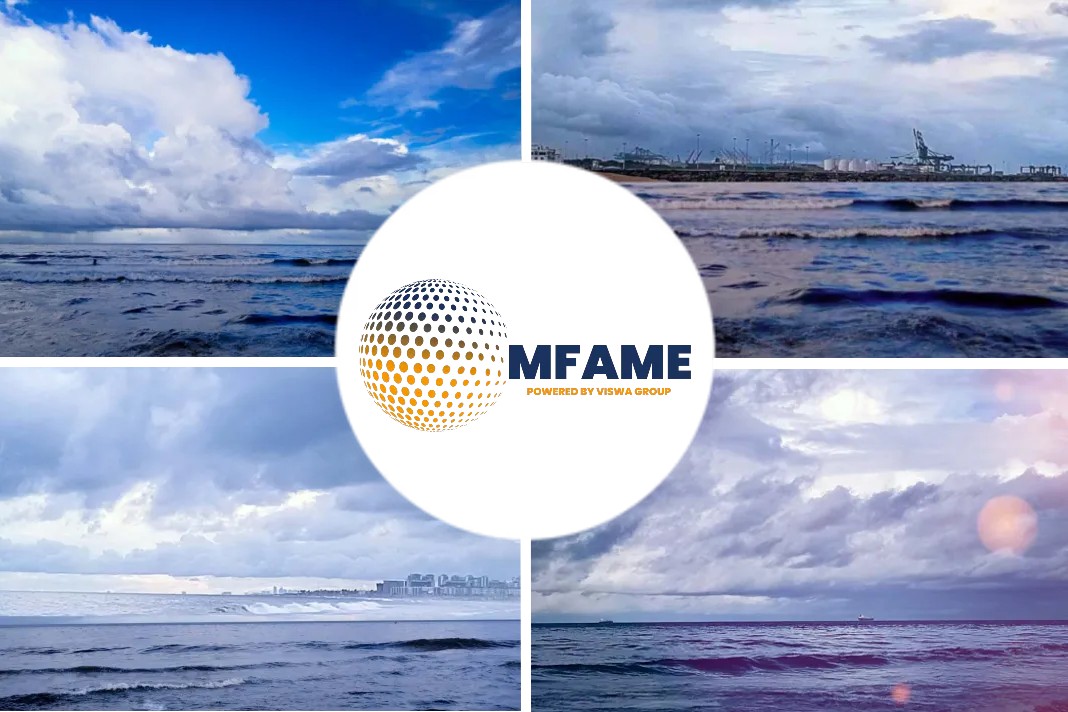Maersk’s announcement of eight deep-sea vessels to run on sustainable methanol will stretch supply lines and may mean a shake-up of favored bunkering locations amid higher prices, says a press release published on their website.
Increasing in cost of fuel
There will be a roughly two-fold increase in the cost of fueling these ships, Maersk’s head of decarbonization innovation and business development Jacob Sterling told S&P Global Platts.
The renewable methanol will cost at least as much as conventional fuel oil on a metric ton basis and as methanol’s density is around half of fuel oil’s this implies the renewable fuel will cost about twice as much, he said.
S&P Global Platts data for conventionally produced methanol and for fuel oil broadly corroborates this pricing relationship, allowing for uncertainty about the cost of renewable methanol.
Twice in the price
Platts assessed methanol T2 FOB at Rotterdam at $448.51/mt Aug.31 and delivered 0.5% sulfur fuel oil at Rotterdam at $519/mt. This works out at $20.90/gigajoule and $11.90/gj, respectively, showing conventional methanol as almost twice the price of fuel oil.
Platts said on Aug. 13 it was proposing to launch daily methanol bunker fuel price assessments, effective Sept. 27.
Adding ships by 2050
Maersk’s eight 16,000 twenty-foot-equivalent unit vessels, which were announced Aug. 24, imply annual demand of 300,000-360,000 mt of renewably sourced methanol, depending on factors like deployment and operational requirements, Sterling said. There is the potential for an additional four ships in 2025.
The whole Maersk container fleet consumed 10.344 million mt of marine fuel in 2020, the company’s annual report showed.
“All future new buildings will be dual-fueled and ready for carbon-neutral operation, but there are no concrete plans for more ships,” Sterling said.
Signed an agreement
The new methanol-powered vessels were announced after Maersk had already said it had signed an off-take agreement with renewable energy suppliers REintegrate and European Energy to establish a new Danish facility to produce approximately 10,000 mt/year of carbon-neutral methanol.
Discussions with other potential suppliers of renewable methanol are underway but securing the 360,000 mt for the new vessels will be a challenge and could mean less of a focus for the methanol-powered ships on traditional bunker hubs, such as Rotterdam, than for conventionally-fueled ships, Sterling said.
“Especially in the beginning, we will have to be a little creative about where we bunker… Especially in the first years, when the supply of green methanol will be scattered in different places,” he said.
Flexibility in fuel price
To some extent, this is business as normal as vessels already bunker where fuel is cheapest and so there is already flexibility in fuel purchasing for the company, he added. “We will try to bring the bunkering as close to the production of the fuel as possible,” Sterling said.
There is the potential for a shake-up in bunkering locations as the shipping industry makes progress with its energy transition, market watchers have said. Brazil, India, Mauritius, and Malaysia could see their main ports develop as bunkering locations with the right regulatory and financial backing, as the maritime sector pivots from petroleum-based fuels to greener options, the World Bank said in April.
Access to renewable energy
Access to renewable energy resources or to natural gas to use in conjunction with carbon capture will be key, as will shipping volumes calling at a country’s ports, the bank said in its “The Potential of Zero-Carbon Bunker Fuels in Developing Countries” report.
However, while key bunkering locations for ships running on renewable fuel may show more variation than conventionally-fueled vessels do, shipping routes themselves will not change, Sterling said.
Closing the price gap
Putting a price on carbon will be crucial to making new bunker fuels economically viable, Sterling said.
The European Union Emissions Trading Scheme will expand to include CO2 emissions from shipping for the first time, according to draft legislation unveiled by the European Commission on July 14. This system will cover two-thirds of the sector’s CO2 emissions — estimated at 90 million mt, the European Commission said.
The system will cover emissions from ships calling at an EU port or voyages within the EU as well as 50% of the emissions from voyages starting or ending outside the EU, and emissions that occur when ships are at berth in EU ports.
“We are engaging actively with the EU on pushing it in the right direction so that it actually achieves real and meaningful reductions of the greenhouse gas impact of shipping,” Sterling said. “What’s really important for us is that when you look at fuels you look at not only CO2 emissions but also CO2 equivalents,” he said.
Methanol lags behind LNG
“We would like to see a global carbon tax of $150/mtCO2e, which in terms of [conventional fuel] is equivalent to around $450-$500/mt,” Sterling said.
Methanol is receiving growing attention as a bunker fuel but still lags behind LNG. Taking the clean tanker segment, owners are investing in vessels that will run on methanol, LNG, and in a few cases on battery propulsion, analysts at S&P Global Platts Analytics said. “Our base case 2030 fleet model forecasts that 440 LNG dual-fuel vessels are delivered compared with 79 methanol-fueled vessels along with a handful of other alternative fuels,” it said.
This equates to 0.5% of the 2030 fleet, the analysts added.
Did you subscribe to our daily newsletter?
It’s Free! Click here to Subscribe!
Source: S&PGlobal






















